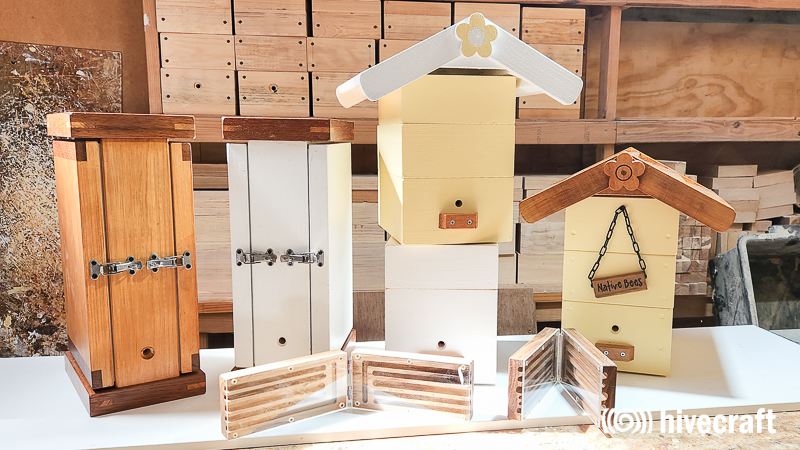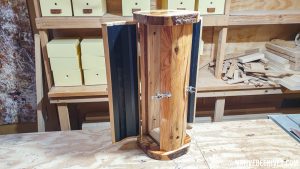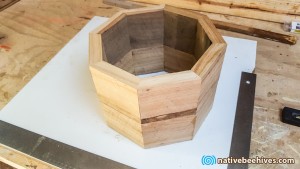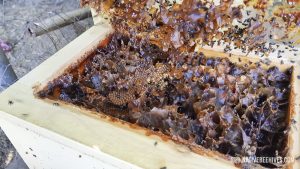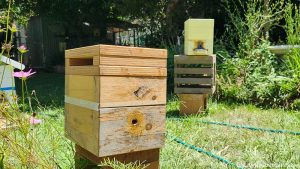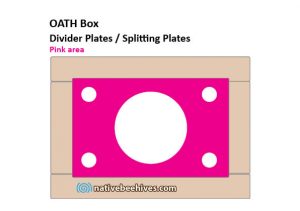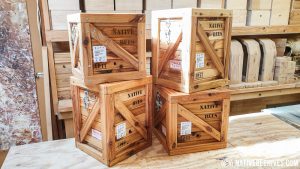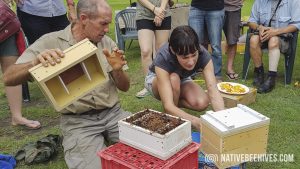This article is referring to species like Tetragonula carbonaria and Tetragonula hockingsi.
Assess your colony before spltting!
The biggest cause of split failure is when the colony is not full and healthy. A stingless bee colony does not need to be split at all and will not outgrow the hive and abandon it. There is a misconception that a stingless bee colony needs to be split every year or they will leave. We see splits being done on colonies that aren’t full and healthy. This can cause a high failure rate and gives the method a bad rap.
Consider the conditions
Avoid rainy or cold days. If you’re opening the colony then you don’t want to expose them to poor conditions. What’s the forecast for the next week or months? Avoid rain or cold periods. Poor conditions can negatively impact the bees ability to repair or build the hive.
What else is happening? Consider the great colony losses everyone is having during 2023 – 2024
What time of year?
With no experience it may be best to split a colony after Winter when the temperatures are warming up so the bees have plenty of time to build up again before the next Winter. Many experienced keepers split all year round depending on conditions and weather. Some like to split in Winter as there can be less pests.
What time of day?
Splits can be done any time of the day. This is all personal preference. I haven’t heard of any reason why a set time is better.
Where to split?
It’s best to split the hive at the location the hive is. Forager bees can return to the hive and any bees that crawl out during the split will find there way back in. If you conduct the split ten metres away from it’s normal location then many bees wont find their way back in to the hive.
Where do you place the new half split?
One half is always placed back in the original location. The new split can be placed anywhere. Beside the old one, on top, underneath etc. Some bee keepers place the boxes side by side and can swap the boxes over the next week so forager bees return to the other box in the hope that it boosts numbers for a weaker colony. Generally for the back yard keeper, the new split is moved a few metres away or anywhere in the yard, front yard to back yard etc or even moved to a new location down the road or across suburbs to a family members property.
Is weight an indicator?
Weight tells you if the box is full. You will need to know or guess the weight of the empty box. The colony contents will also depend on the internal volume of the box. A smaller volume will naturally only allow the colony to build up to a set weight. A larger volume box may build to double the contents weight before it’s considered heavy enough to split. Weight has always been an excellent indicator and all large bee keepers use it.
Building out the hive
Sometimes we see colonies “building out the hive”, meaning they store excess pollen and honey and the space for the brood becomes very small and possibly even causes the colony to decline. There’s no research on this but how often does this occur in 100 colonies, very few times, maybe 1%? We can be generous and say 5%. So you could say 95% of the time weight is an excellent indicator that the colony is normal, healthy and full. Then it’s up to you if you want to split it.
Bee numbers and activity
Of course you need bees and lots of them. Having thousands of bees working and maintaining the hive is a must. Before you open the hive you’re going to check bee activity at the entrance. If it’s below 18c you may not see any bees at all and that’s not the best time to open a hive anyway. Above 18c you should be seeing plenty of activity. One bee per minute is not great, 50 per minute is very good, 100 bees per minute is awesome. When you open the hive you should see thousands of bees.
Brood
The main factors for a colony to survive is having a good amount of healthy brood and lots of bees. After you’ve opened the hive you really want to see a large brood. It should even be taking up one third to half the space in the cross section view. You’ll want to make sure after the split each box has a reasonably even amount of brood.
Honey and Pollen Stores
You’ve opened it and the brood is good, has heaps of bees but none or hardly any honey or pollen pots? If it has low stores then the weight was probably low. While the brood and bees could be the best thing to have, no or low stores is an indicator that there’s low resources in the field. Continuing with a split could be pretty high risk.
You don’t have to do it!
If you’ve opened the hive and you’re not sure you can put it back together. Sometimes you’ve gone this far and things don’t look quite right, not enough brood, the brood split in a bad place, not many bees, no honey pots. It can be best just to put it back together and leave it for another time, even a week later when the brood splits in a better spot.
Ideally in a full healthy hive it will be “chockers” with everything, pollen, honey pots, brood and bees.
Examples:
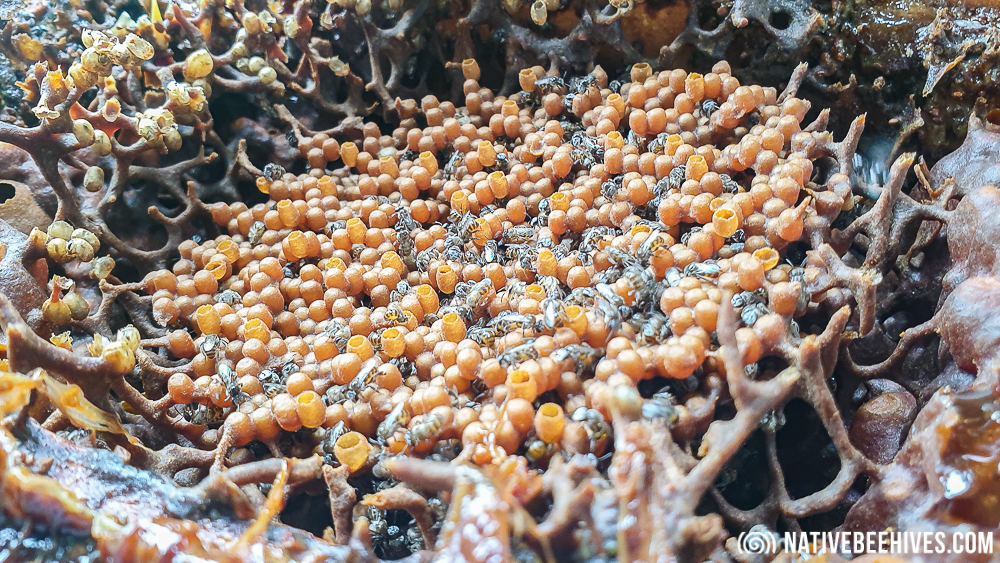
Below: This Th bottom box is full and the top half was full so it was ready for splitting.

Below: A Tc colony ready for spltting

Below: Tc colony. Full brood and heaps of bees.
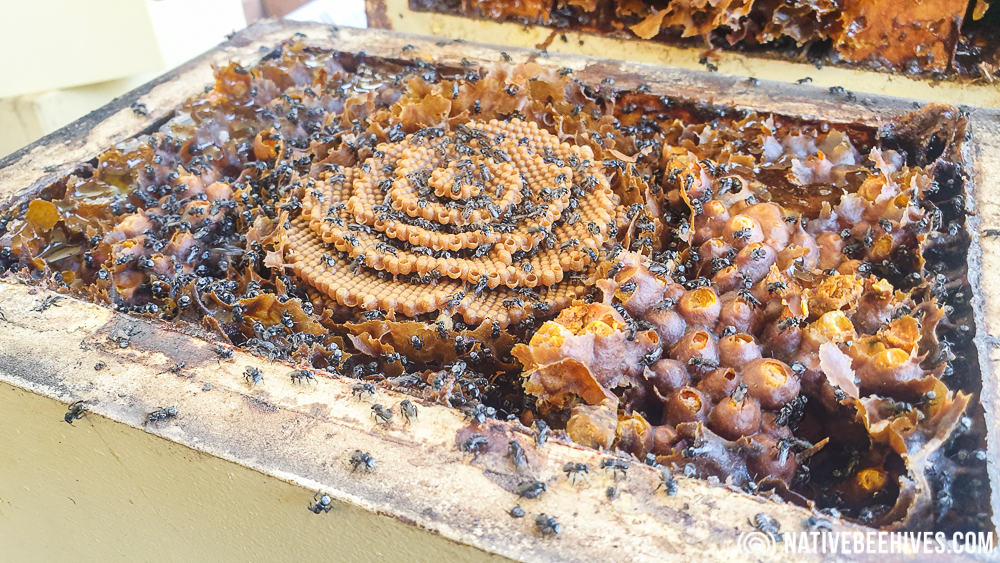
Below: this is a very small growing colony. It’s not even close to being ready for splitting


